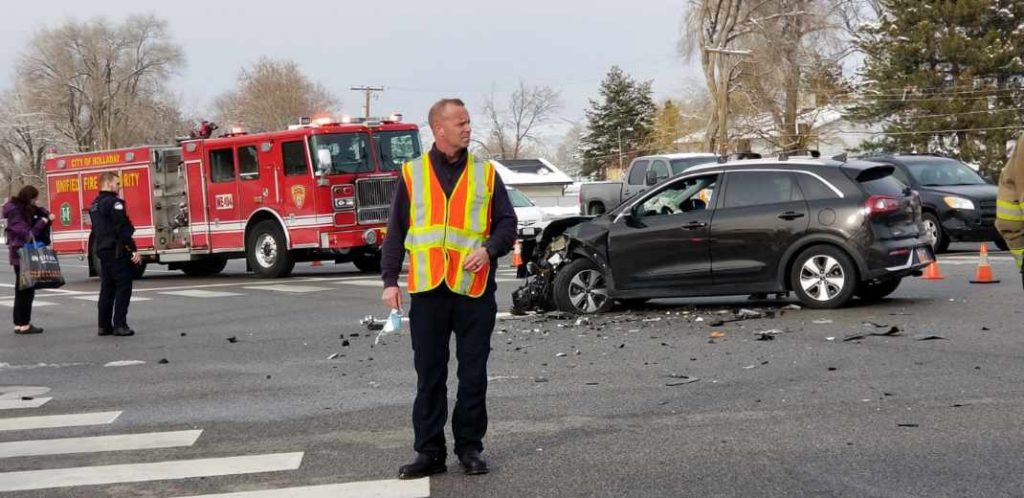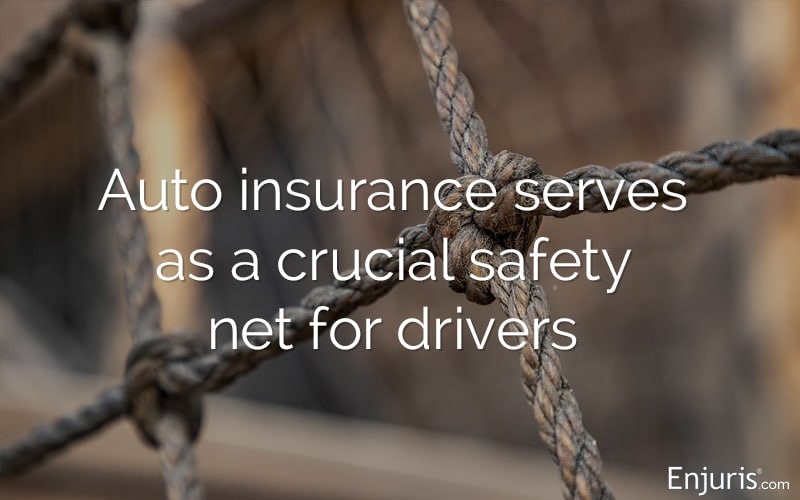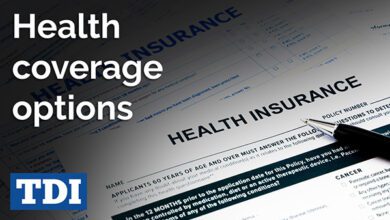What Does Auto Insurance Cover: Your Ultimate Guide

Auto insurance typically covers damage to your vehicle, property damage, and liability for bodily injury. It also provides protection against theft, vandalism, and natural disasters.
Understanding auto insurance is critical for all drivers. This form of protection is not just a legal requirement in many areas; it is a crucial financial safety net. Auto insurance policies can vary, but most offer a combination of collision, comprehensive, liability, and medical coverage.
Drivers can customize their insurance based on their specific needs and the requirements of their state. Having the right auto insurance means you’re financially protected in case of car-related mishaps. It’s an investment into your peace of mind on the road. Selecting the appropriate coverage can save you from the high costs associated with vehicular accidents and related legal issues.
Essential Components Of Auto Insurance
Auto insurance is a multifaceted product designed to protect drivers from financial loss in case of accidents or theft. Among its core components liability coverage stands out; it is a mandatory aspect in most states. This coverage takes care of expenses related to injury or property damage that the policyholder is responsible for after an accident.
Protection doesn’t end there; the policy might also include uninsured and underinsured motorist protection. This proves crucial when an at-fault driver lacks sufficient insurance to cover the resulting costs, effectively safeguarding the policyholder’s finances.
Comprehensive coverage is designed to address non-collision-related incidents, such as theft, fire, or natural disasters. It functions by compensating the policyholder for the vehicle’s loss or damage due to such events.
With a deeper dive into auto insurance, collision coverage emerges as an equally important element. It specializes in repairing or replacing the policyholder’s vehicle when damage occurs from an impact with another vehicle or object.
Lastly, importance is placed on medical payments and personal injury protection. These components assist in managing medical expenses for the policyholder and their passengers in the wake of an injury-causing accident, regardless of who is at fault.
Customizing Your Auto Insurance Policy
Customizing your auto insurance policy involves assessing individual needs to determine the most suitable deductible. A higher deductible can lower premiums, but it means more out-of-pocket expenses in the event of a claim. Conversely, a lower deductible reduces the amount you’ll pay when a claim is made, yet it can increase your monthly premiums.
Optional coverage add-ons are designed to enhance protection. Gap insurance, uninsured motorist coverage, and comprehensive coverage are some of the options that can provide additional peace of mind.
For those who travel frequently or do not have another means of transportation, Roadside Assistance offers services like towing, flat tire changes, and jump-starts in emergencies. Rental Reimbursement helps cover the cost of a rental car while your vehicle is being repaired after an insured event.
Types Of Covered Incidents
Auto insurance coverage is multifaceted, offering protection in diverse situations. Accidents involving other vehicles typically fall under the collision insurance umbrella, ensuring financial support for damages stemming from traffic mishaps, regardless of fault.
Single-car accidents also receive coverage attention. This includes incidents such as hitting a tree or guardrail, where collision insurance steps in to alleviate repair costs.
The impact of natural disasters on vehicles can be monumental; hence, comprehensive insurance is pivotal. It addresses damage from floods, earthquakes, hail, and other unexpected environmental events, shielding owners from the full brunt of mother nature’s unpredictability.
Lastly, let’s consider the misfortunes of vandalism, theft, and other non-collision events. Comprehensive insurance proves invaluable here as well, offering solace to car owners faced with the unsettling aftermath of such occurrences.
Navigating Claims And Payouts
Navigating claims in auto insurance requires understanding several key steps. Initially, policyholders must promptly report the incident to their insurance provider to initiate the claims process. This involves providing details about the incident, any third-party involvement, and potential witnesses.
Following the report, insurers assess damage to determine the extent of liability. Professional assessments may include on-site evaluations by claims adjustors or requests for the submission of photos and repair estimates.
Payout limits are crucial in understanding potential compensation. These limits, outlined in the policy, cap the amount a policyholder may receive. Types of coverage, such as liability, collision, and comprehensive, dictate which damages are covered and to what extent.
Occasionally, policyholders may find themselves in a scenario where they must resolve disputes over claims. Disagreements might arise regarding the amount offered or denial of a claim. In such cases, policyholders may seek appraisal, mediation, or, as a last resort, legal action to reach a resolution.
Policy Exclusions And Limitations
Auto insurance policies are crafted with specific clauses detailing coverage limits and exclusions which dictate the extent to which an insurer will cover expenses. Often, policies will not cover certain incidents or behaviors, such as intentional acts, use of the vehicle for illegal enterprises, or damages occurring from acts of war.
Policy limits play a pivotal role in coverage, establishing the maximum amount an insurer will pay following a claim. Policyholders should carefully assess their coverage limits to ensure sufficiency relative to their potential risk exposure and asset value. Insufficient limits might result in out-of-pocket expenses post-incident.
| Excess Coverage | Function |
|---|---|
| Umbrella Insurance | Provides additional liability coverage beyond the standard policy limit. |
| Gap Insurance | Covers the difference between the vehicle’s actual cash value and the amount owed on the loan or lease in case of total loss. |
Exclusion endorsements may be added to a policy to clarify the conditions under which coverage would not be granted. It’s imperative for policyholders to understand their policy’s exclusions and endorsements to avoid surprises during the claims process.

Credit: www.enjuris.com
Maximizing Benefits And Minimizing Cost
Understanding and optimizing your auto insurance involves various tactics. To lower premiums, consider increasing your deductible and only purchasing essential coverage based on the value of your vehicle. Regularly compare insurance quotes from multiple providers to ensure competitive pricing. Maintaining a clean driving record is crucial as it directly influences rates; accidents and traffic violations can significantly increase costs.
Many insurance companies offer a plethora of discounts that can lead to substantial savings. These include safe driver discounts, low-mileage discounts, and bundle deals for combining auto insurance with other policies such as homeowners insurance. Consistently reviewing your policy and updating your coverage can prevent paying for unnecessary add-ons.
It is essential to find a balance between cost and coverage quality. Opting for the cheapest option might not provide adequate protection in the event of an accident. Seek out policies that offer a fair balance between the premiums you pay and the coverage you receive, ensuring you are not underinsured or overpaying.
Frequently Asked Questions On What Does Auto Insurance Cover
What Does Auto Insurance Typically Provide?
Auto insurance typically covers vehicle damage, liability for injuries and property damage, and may offer protection against theft and natural disasters. Personal injury and uninsured motorist coverage are also common features.
What Is Considered Your Covered Auto?
Your covered auto is any vehicle listed in your insurance policy, including the primary car you drive and any additional ones specified by your insurer.
What Does Insurance Cover?
Insurance policies typically cover losses due to events such as accidents, theft, and natural disasters. Coverage specifics vary depending on the insurance type, like health, auto, or home.
What Is Included In Standard Auto Insurance?
Typical auto insurance policies cover bodily injury and property damage liability, personal injury protection, collision, comprehensive, and uninsured/underinsured motorist coverage. These core components safeguard against various financial risks associated with driving.
Conclusion
Navigating auto insurance complexities can feel daunting. Yet, understanding coverage ensures peace of mind on the roads. This article demystified the essentials, from liability to comprehensive protection. Remember to review your policy regularly and consult with your provider for tailored advice.
Drive secure, knowing you’re covered.







